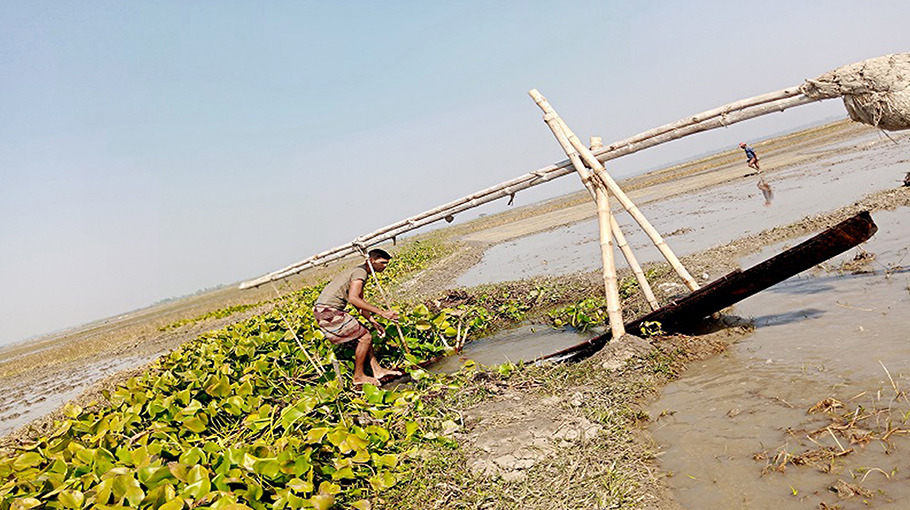Wooden irrigation devices vanishing as farmers rely on machines

Due to the introduction of mechanical machines for irrigation, the watering in the crop fields by using low-cost, human-operated 'Jaant, a wooden narrow boat-like structure, in the low-lying Chalan Beel areas of Rajshahi, Natore and Naogaon districts mainly, has been obliterated and is only a past memory now.
The water irrigated in the crop fields of the districts was just filled in those 'Jaants' by drowning the lower part of that wooden structure by pressing it with legs and the pressure was then removed to rise the structure so that water carried by it is poured into the field. This indigenous technique of watering the crop field needed no machines, fuel, or money except the labour of the farmers for two or three hours a day. The water irrigated in the field using such a tool was from surrounding water surface bodies, not from underground sources which ensured the non-dipping of subterranean water levels and the water was also free from harmful chemicals like Arsenic, iron, sand and other materials. With the passing of time the word ‘Jaant' remained only as a tale from the past for future generations though once it was considered to be one of the most important tools for water irrigation. In most parts of the northern region, the tool was known as 'jaant' while it was termed through various names in other parts of the country.
As time passed, farmers became more dependent on machines, and Jaant is now an exhibit in Museums only. became a permanent member of the museum.
The farmers used jaant to cultivate their land by irrigating it with water from the rivers, canals, and ponds that ran through the various villages of the region. After talking with various senior people of the villages of Chalabeel areas, it is known that tin, bamboo pots, and wooden sticks were used to irrigate the cropland in earlier days. Water was irrigated from rivers, canals, or reservoirs through small tools ( cans) made of tins, bamboo mats and ropes manually operated by two-farmers. And for irrigating a large space of fields, Jaant was used which was operated by only one labour or a farmer. The Jaants were made by carving the middle part of a narrow, ten to twelve feet long mango, jackfruit or Cocoanut trees in the middle shaping those like very narrow boats. In some places, Palm, Jiga, Betel nut and pine trees were also used to make jaant. Aside from labour, there is no additional cost to irrigate water by using Jaant.
Abdus Samad, a farmer of Mahitur village underAkkelpur upazila said, two strong bamboo poles in the shape of a cross are fixed into the ground and another long bamboo is tied to it. If one part of the jaant head is filled with something heavy (weighty) like stone or hard-soil lump and the other part is dipped in water using pressure of human legs, a lot of water would fill the carved, boat-like part and that would be poured in the crop fields.Through using the Jaant water is continuously irrigated as the irrigation work is done quickly with less labour and effort. With the advent of modern irrigation systems such as shallow, deep, LLP, etc., the use of jaant is now almost a forgotten past.
According to Majid Mondal, a farmer in Sonamukhi village in Upazila, there used to be water in rivers and canals all through the year. Water was supplied to the crop fields with the help of irrigation from these rivers and canals. Now, most of those rivers have turned into crop fields. and modern irrigation equipment are used for the purpose of irrigating water from underground water sources and thus depleting the subterranean water levels alarmingly. By using the conventional Jaants for irrigation, the surface water of the region would be used properly which is fully cost effective and only manual labour is required for several hours, he added.



